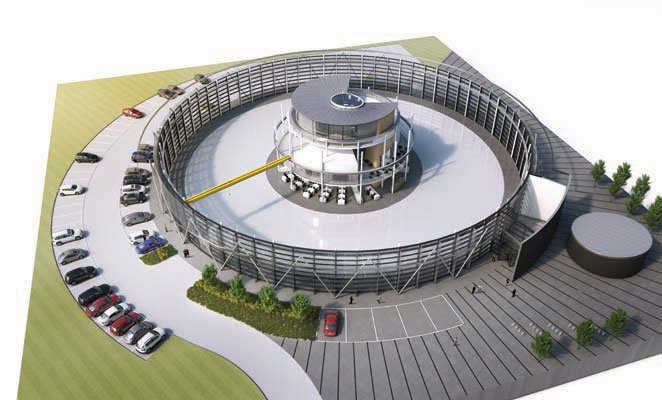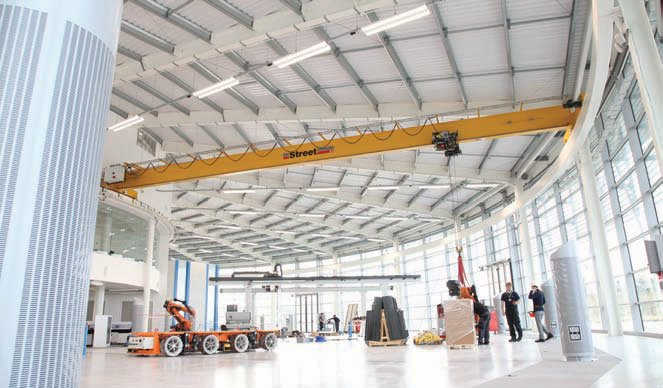What it’s like to supply overhead cranes to advanced manufacturing
Do you feel excited when the word advanced is mentioned? If you are interested in advanced technology, then you will like the crane case we mentioned today. The crane case we are going to analyze today took place in the UK. A local crane supplier supplied 3 bridge cranes to an advanced manufacturing factory in the UK and played an important role in it. The person in charge of the factory commented: The overhead cranes form an essential part of the facility as they are in constant use, locating, moving and positioning heavier objects such as robots and machine beds.
What kind of advanced manufacturing factories are bridge cranes used in?
The facility is billed as the UK’s first reconfigurable assembly and parts manufacturing facility for collaborative research. It is a revolutionary glass-walled “reconfigurable factory” at the heart of the University of Sheffield’s new advanced manufacturing campus at Sheffield Business Park.

Its purpose is to ensure that the UK’s advanced manufacturing supply chains have access to the expertise they need to make the most of new challenges and opportunities, and that the UK remains an international leader in high-value manufacturing.
The crane company designs, supplies and installs cranes that will play a vital role in the handling of heavy machinery and parts including robots, wind turbines and aircraft wings. In addition to two 10-tonne cranes that can operate in tandem, the contract also includes a bespoke circular overhead crane capable of traveling around the unique building and lifting products weighing up to 5 tonnes.
The factory needed a lighter crane for the circular building, and given its iconic shape, they turned to the crane company to design a product that would fit their exact specifications. Using larger cranes in tandem helps improve safety. For example, aircraft wings can be flexible, so lifting them with two cranes ensures greater stability.
This circular single girder crane is unlike any other crane we have built before as it is equipped with a special end carriage that allows it to travel around the track of a circular building. All cranes are equipped with an electric hoist which will maximize Maximize reliability, production and performance, and minimize maintenance requirements.
Bridge cranes have a huge impact on productivity, so the product and the team behind it must be of the highest standard.

What can we learn from this
Strictly speaking, every project we have done has its own differences, and the working environment and site parameters are almost never the same. In this case, although there are some systematic differences between advanced manufacturing and traditional manufacturing, they still have many things in common. From this we see the flexibility of crane design, and this flexibility allows it to be fully applied in almost all industries. Crane companies that can master this flexibility will definitely gain more trust from customers.
We can summarize the following points about the flexibility of crane design:
- Versatility: A crane should have a variety of lifting and handling capabilities to accommodate cargo of different shapes, sizes and weights. For example, by replacing different spreaders or tools, the crane can perform various operations such as lifting, carrying, rotating, and positioning.
- Adaptability: The crane should be able to work stably and safely in different working environments, including indoor, outdoor, high temperature, low temperature, humid, dry and other environments. In addition, the crane should also have corresponding adaptability to different terrains and ground conditions.
- Ease of operation: The operation of the crane should be simple, intuitive and easy to master. For operators, they should be able to quickly become familiar with and master the operating skills of the crane to improve work efficiency.
- Maintenance ease: Cranes should be designed with ease of maintenance and care in mind. For example, wear parts that are easy to access and replace, mechanical systems that are easy to inspect and adjust, appearance structures that are easy to clean and maintain, etc.
- Safety: The safety of a crane’s design is an important reflection of its flexibility. This includes structural strength, stability, anti-overturning ability, safety protection devices and other aspects. Only on the premise of ensuring safety can cranes work flexibly and efficiently in various working environments.
